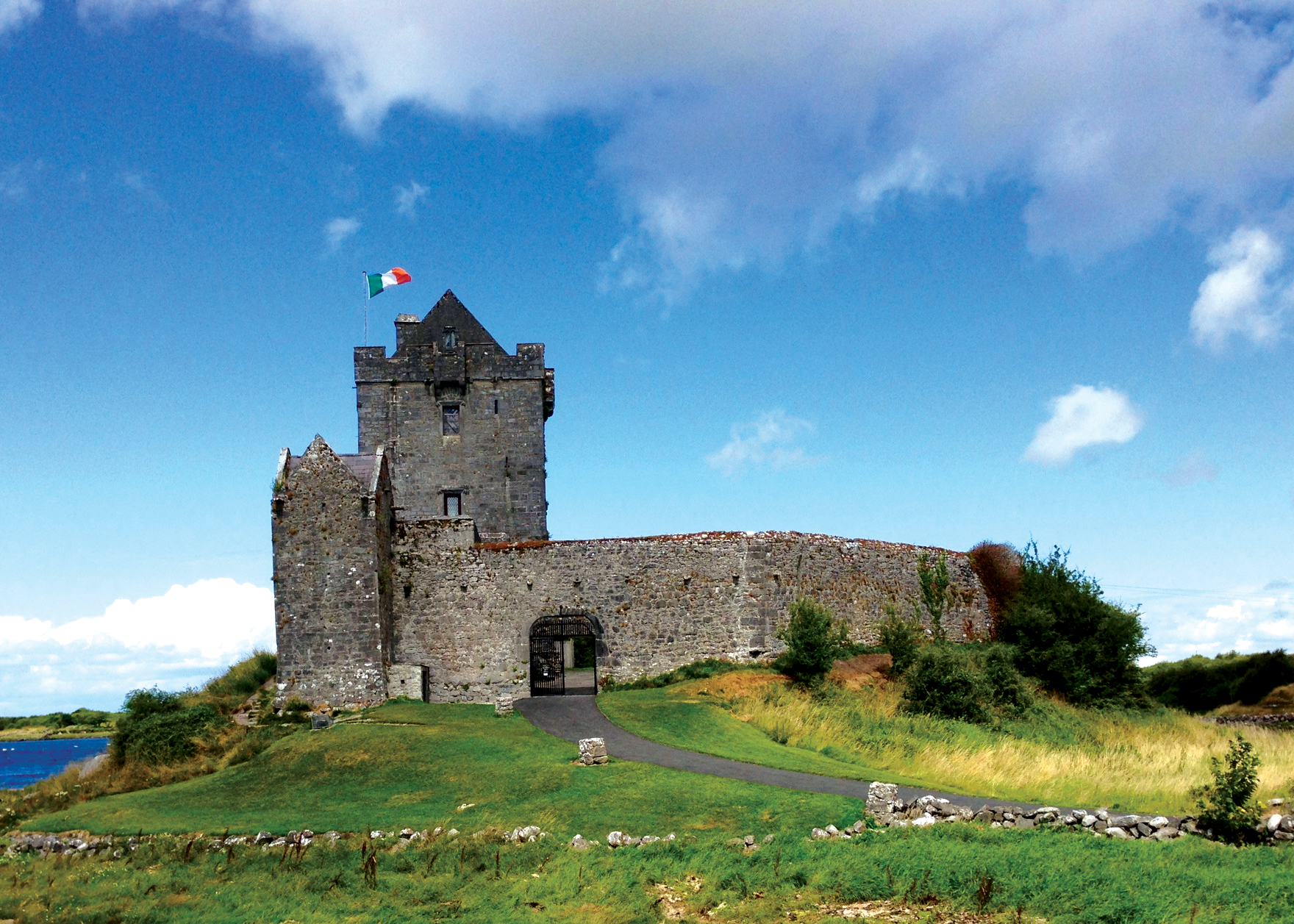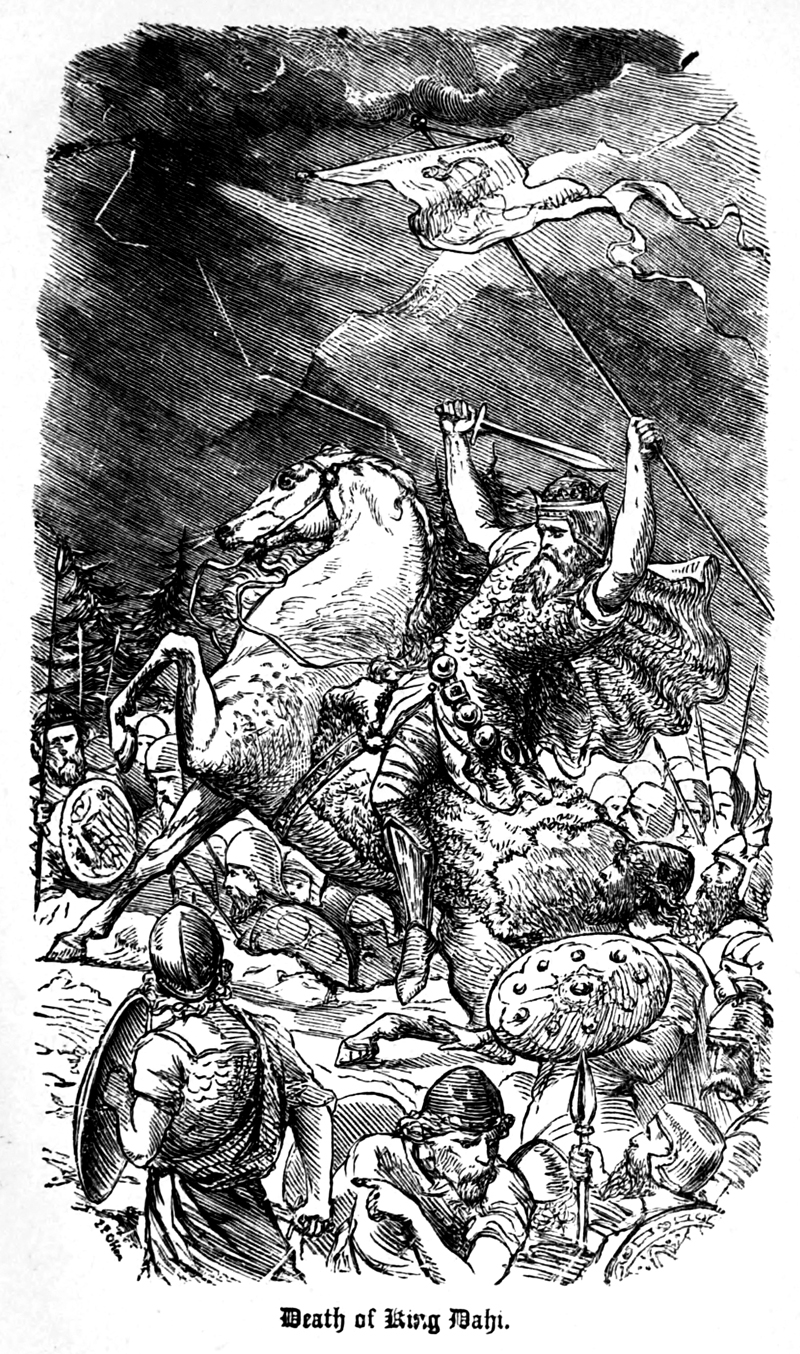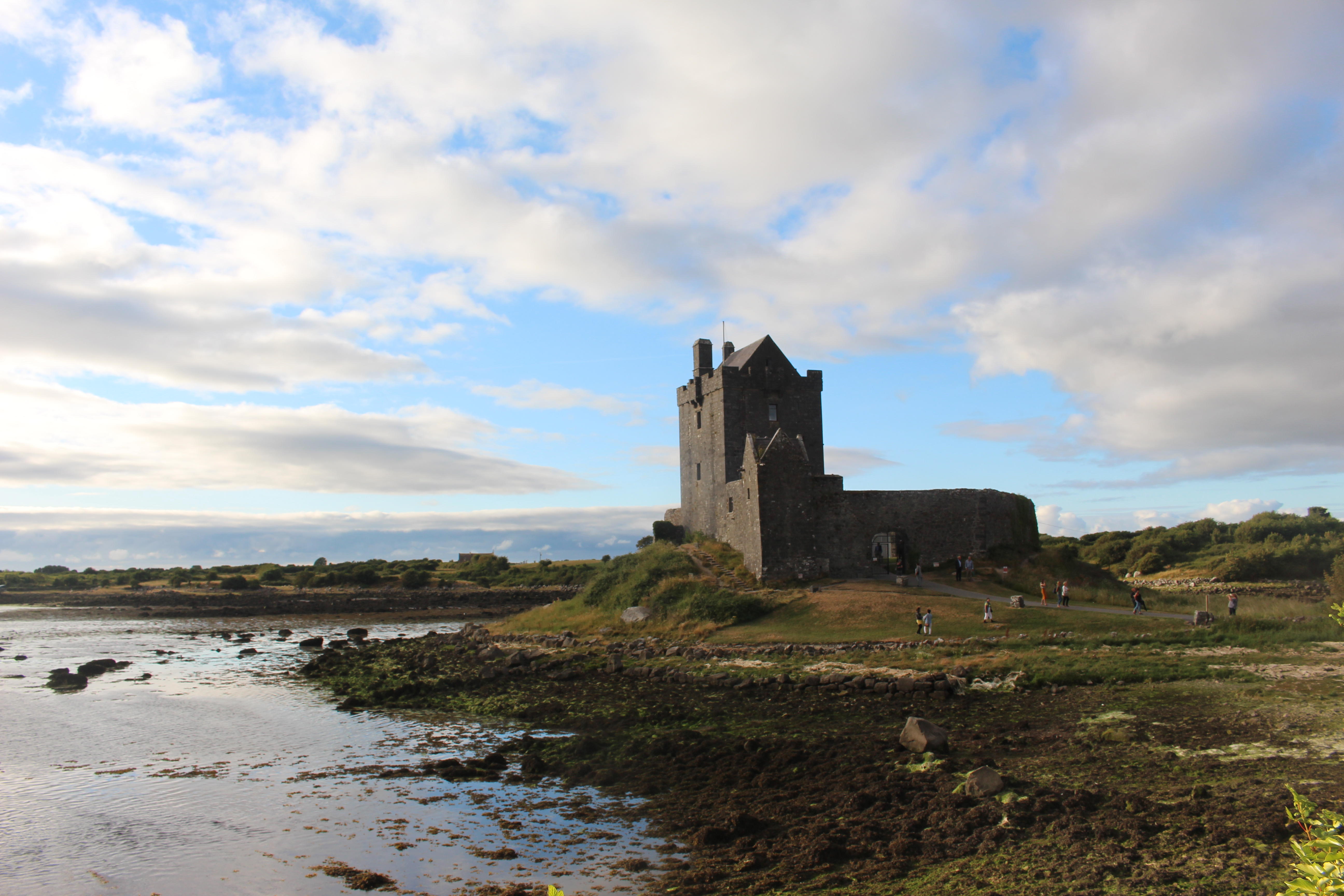|
Colga Of Kilcolgan
Colga of Kilcolgan, Irish saint, . Colga was the founder of the first Christian settlement at Kilcolgan, County Galway. He would have been contemporary with Colman mac Duagh and Surney of Drumacoo. His sister, Feilis, also founded a Christian settlement in the area. According to genealogies, Colga and Feilis were of ''the progeny of Aodh mac Lughaidh mac Nath Í.'' This would make him a kinsman of the Uí Fiachrach Aidhne dynasty, and its rulers such as Guaire Aidne mac Colmáin. See also Colga FC References * ''The Great Book of Irish Genealogies, 711.12, pp. 718–19, volume two, Dubhaltach MacFhirbhisigh; edited, with translation and indices by Nollaig Ó Muraíle Nollaig Ó Muraíle is an Irish scholar. He published an acclaimed edition of Dubhaltach Mac Fhirbhisigh's '' Leabhar na nGenealach'' in 2004. He was admitted to the Royal Irish Academy in 2009. Life and career A native of Knock, County Mayo, ...'', 2003-2004. {{DEFAULTSORT:Colga Of Kilcolgan Chri ... [...More Info...] [...Related Items...] OR: [Wikipedia] [Google] [Baidu] |
Irish People
The Irish ( ga, Muintir na hÉireann or ''Na hÉireannaigh'') are an ethnic group and nation native to the island of Ireland, who share a common history and culture. There have been humans in Ireland for about 33,000 years, and it has been continually inhabited for more than 10,000 years (see Prehistoric Ireland). For most of Ireland's recorded history, the Irish have been primarily a Gaelic people (see Gaelic Ireland). From the 9th century, small numbers of Vikings settled in Ireland, becoming the Norse-Gaels. Anglo-Normans also conquered parts of Ireland in the 12th century, while England's 16th/17th century conquest and colonisation of Ireland brought many English and Lowland Scots to parts of the island, especially the north. Today, Ireland is made up of the Republic of Ireland (officially called Ireland) and Northern Ireland (a part of the United Kingdom). The people of Northern Ireland hold various national identities including British, Irish, Northern I ... [...More Info...] [...Related Items...] OR: [Wikipedia] [Google] [Baidu] |
Saint
In religious belief, a saint is a person who is recognized as having an exceptional degree of holiness, likeness, or closeness to God. However, the use of the term ''saint'' depends on the context and denomination. In Catholic, Eastern Orthodox, Anglican, Oriental Orthodox, and Lutheran doctrine, all of their faithful deceased in Heaven are considered to be saints, but some are considered worthy of greater honor or emulation. Official ecclesiastical recognition, and consequently a public cult of veneration, is conferred on some denominational saints through the process of canonization in the Catholic Church or glorification in the Eastern Orthodox Church after their approval. While the English word ''saint'' originated in Christianity, historians of religion tend to use the appellation "in a more general way to refer to the state of special holiness that many religions attribute to certain people", referring to the Jewish tzadik, the Islamic walī, the Hindu rishi or ... [...More Info...] [...Related Items...] OR: [Wikipedia] [Google] [Baidu] |
Kilcolgan
Kilcolgan (), is a village on the mouth of the Kilcolgan River at Dunkellin Bay in County Galway, Ireland. The settlement is at the junction of the N67 and R458 roads, which lies between Gort and Clarinbridge. The village is near the site of the Galway Bay drowning tragedy. Kilcolgan was designated as a census town by the Central Statistics Office for the first time in the 2016 census, at which time it had a population of 141 people. Places of interest * Tyrone House, a ruined manor house * Kilcolgan Bridge, late 18th-century stone bridge * Kilcolgan Castle, Gothic Revival country house * St Sourney (Sairnait)'s church and well, a religious site dating from the 6th Century with an 11th-century gothic carved doorway, a 19th-century mausoleum (celebrated by the British poet Sir John Betjeman) and adjoining graveyard. * Moran's Oyster Cottage, historic restaurant located in a traditional thatched cottage, established in the 1760s. * Kiltiernan Church Kiltiernan Church is ... [...More Info...] [...Related Items...] OR: [Wikipedia] [Google] [Baidu] |
County Galway
"Righteousness and Justice" , anthem = () , image_map = Island of Ireland location map Galway.svg , map_caption = Location in Ireland , area_footnotes = , area_total_km2 = 6151 , area_rank = 2nd , seat_type = County town , seat = Galway , population_total = 276451 , population_density_km2 = auto , population_rank = 5th , population_as_of = 2022 , population_footnotes = , leader_title = Local authorities , leader_name = County Council and City Council , leader_title2 = Dáil constituency , leader_name2 = , leader_title3 = EP constituency , leader_name3 = Midlands–North-West , subdivision_type = Country , subdivision_name = Ireland , subdivision_type1 = Province , subdivision_name1 = Connacht , subdivisi ... [...More Info...] [...Related Items...] OR: [Wikipedia] [Google] [Baidu] |
Colman Mac Duagh
Saint Colman mac Duagh (c. 560 – 29 October 632) was born at Corker, Kiltartan, County Galway, Ireland, the son of the Irish chieftain Duac (and thus, in Irish, ''mac Duach''). He initially lived as a recluse, living in prayer and prolonged fastings, first on Inismore, then in a cave at the Burren in County Clare. With his relative, King Guaire Aidne mac Colmáin (d. 663) of Connacht he founded the monastery of Kilmacduagh, ("the church of the son of Duac"), and governed it as abbot-bishop. He has been confused with Saint Colman of Templeshanbo (d. 595) who was from Connacht and lived somewhat earlier. Early life St Colman was reportedly the son of Queen Rhinagh and her husband the chieftain Duac, born in Kiltartan, now County Galway. Priesthood He was educated at Saint Enda's monastery on Inishmore/''Árainn'', the largest of the Aran Islands and lived there as a hermit. He built a church, ''Teampuill Mor Mhic Duagh'', and a small oratory, ''Teampuill beg Mhic Duag ... [...More Info...] [...Related Items...] OR: [Wikipedia] [Google] [Baidu] |
Nath Í Mac Fiachrach
Nath Í, also known as Dathí, son of Fiachrae, son of Eochaid Mugmedon, was a semi-historical Irish king of the 5th century, the father of the likely-historical king Ailill Molt and the ancestor of the Uí Fiachrach dynasties of early medieval Connacht. His mother was Béḃinn. According to legend, he was a High King of Ireland, and died after being struck by lightning while on an expedition to the Alps. History Historically, Nath Í is primarily known for his descendants. His son Ailill Molt was likely a historical 5th century king.Philip Irwin, "Nath Í mac Fiachrach (supp. d. 445?)", ''Oxford Dictionary of National Biography'', Oxford University Press, 2004accessed 6 September 2015/ref> Two more sons, Echu and Fiachnae, were the ancestors of the Uí Fiachrach Aidni and the Uí Fiachrach Muaide respectively, both early medieval dynasties in Connacht. A fourth son, Amalgaid, was the ancestor of Tírechán, the 7th century bishop and biographer of St. Patrick. Nath Í's ... [...More Info...] [...Related Items...] OR: [Wikipedia] [Google] [Baidu] |
Uí Fiachrach Aidhne
Uí Fhiachrach Aidhne (also known as Hy Fiachrach) was a kingdom located in what is now the south of County Galway. Legendary origins and geography Originally known as Aidhne, it was said to have been settled by the mythical Fir Bolg. Dubhaltach Mac Fhirbhisigh's Leabhar na nGenealach states that the Tuath mhac nUmhoir were led by leader Conall Caol, son of Aonghus mac Úmhór. Connall was killed at the Battle of Maigh Mucruimhe in 195, and his body brought back to Aidhne where it was interred at a leacht called Carn Connell (itself the site of a major battle some centuries later). Located in the south of what is now County Galway, Aidhne was coextensive with the present diocese of Kilmacduagh. It was bounded on the west by Loch Lurgain (Galway Bay) and the district of Burren in County Clare. County Clare also bounds Aidhne on its south and south-east side. Aidhne is bounded on the east by the low mountains of Slieve Aughty, which separated Uí Fhiachrach Aidhne from Uí M ... [...More Info...] [...Related Items...] OR: [Wikipedia] [Google] [Baidu] |
Guaire Aidne Mac Colmáin
Guaire Aidne mac Colmáin (died 663) was a king of Connacht. A member of the Ui Fiachrach Aidhne and son of king Colmán mac Cobthaig (died 622). Guaire ruled at the height of Ui Fiachrach Aidne power in south Connacht. Early reign Guaire appears to have succeeded his father as king of the Ui Fiachrach Aidhne in 622. In 629 was fought the Battle of Carn Feradaig (Carhernarry, County Limerick), where he suffered a defeat at the hands of the Munster king Faílbe Flann mac Áedo Duib (died 639). His ally Conall mac Máele Dúib of the Ui Maine was slain. According to Keating, Guaire's reason for this campaign was to recover the Thomond region from Munster. Prof. Byrne believes that this defeat marked the true expansion of the Déisi Tuisceart into Thomond. He also states that this defeat may have paved the way for Rogallach mac Uatach (died 649) in acquiring the overlordship of Connacht. Carn Conaill The next event recorded of Guaire in the annals is the Battle of Carn C ... [...More Info...] [...Related Items...] OR: [Wikipedia] [Google] [Baidu] |
The Great Book Of Irish Genealogies
''Leabhar na nGenealach'' ("Book of Genealogies") is a massive genealogical collection written mainly in the years 1649 to 1650, at the college-house of St. Nicholas' Collegiate Church, Galway, by Dubhaltach MacFhirbhisigh. He continued to add material until at least 1666, five years before he was murdered in 1671. The original 17th century manuscript was bequeathed to University College Dublin (UCD), by Dublin solicitor Arthur Cox in 1929, and can be consulted iUCD Library Special Collections The manuscript can be viewed online at ', which is available i and i Leabhar na nGenealach, was reprinted, and published in a five volume edition in Dublin in 2004 as ''The Great Book of Irish Genealogies''. Description and compilation Described by Eoin MacNeill ''"by far the largest and fullest body of Irish genealogical lore"'', it contains roughly twice as much material as found in the Book of Ballymote and the Book of Lecan. It preserves notes on families from all parts of Ireland, Ga ... [...More Info...] [...Related Items...] OR: [Wikipedia] [Google] [Baidu] |
Dubhaltach MacFhirbhisigh
Dubhaltach Mac Fhirbhisigh (), also known as Dubhaltach Óg mac Giolla Íosa Mór mac Dubhaltach Mór Mac Fhirbhisigh, Duald Mac Firbis, Dudly Ferbisie, and Dualdus Firbissius (fl. 1643 – January 1671) was an Irish scribe, translator, historian and genealogist. He was one of the last traditionally trained Irish Gaelic scholars, and was a member of the Clan MacFhirbhisigh, a leading family of northern Connacht. His best-known work is the ''Leabhar na nGenealach'', which was published in 2004 as '' The Great Book of Irish Genealogies'', by Éamonn de Búrca, more than 300 years after it had been written. Family and education Mac Fhirbhisigh was most likely born at the family castle, in the parish of Lackan, Tireragh, County Sligo, sometime in the first quarter of the 17th century. He was originally known as ''Dubhaltach Og'' ("young Dubhaltach") to distinguish him from his grandfather, ''Dubhaltach Mór'' ("big Dubhaltach"). He was the eldest of four sons born to Giolla Í ... [...More Info...] [...Related Items...] OR: [Wikipedia] [Google] [Baidu] |
Nollaig Ó Muraíle
Nollaig Ó Muraíle is an Irish scholar. He published an acclaimed edition of Dubhaltach Mac Fhirbhisigh's '' Leabhar na nGenealach'' in 2004. He was admitted to the Royal Irish Academy in 2009. Life and career A native of Knock, County Mayo, Ó Muraíle attended National University of Ireland, Maynooth where he was a postgraduate student enrolled for a PhD. He was Placenames Officer with the Ordnance Survey of Ireland 1972–1993. He was Reader in Irish and Celtic Studies at Queen's University Belfast to 2004 and Senior Lecturer at the Department of Irish, National University of Ireland, Galway from 2005–2014. He is married to Tresa Ní Chianáin and has two children, Róisín and Pádraic. He lives in Dublin. Ó Muraíle and Mac Fhirbhisigh In 1971, at the suggestion of Tomás Ó Fiaich, then Professor of Modern History at Maynooth, Ó Muraíle began work on Dubhaltach Mac Fhirbhisigh's '' Leabhar na nGenealach''. This was continued under the direction of Professor of Ol ... [...More Info...] [...Related Items...] OR: [Wikipedia] [Google] [Baidu] |


.jpg)

